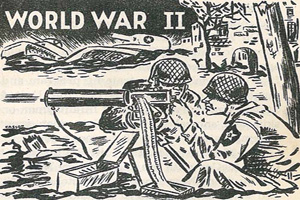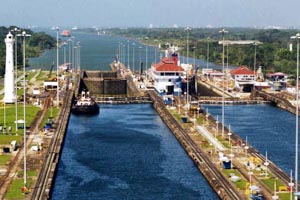 World War I was not given that designation until World War II came along. Here’s hoping there is never a WW III.
World War I was not given that designation until World War II came along. Here’s hoping there is never a WW III.
Fur traders affirm that the making of a full-length mink coat involves hides from at least 35 minks. On special orders, more than 60 pelts may be required.
Plans that sound great in the discussion stage can go completely sour during implementation. A man named Pete Pickett felt that too many out-of-towners were harvesting squirrels in his favorite “used-to-be-secret” woods area. A friend of Pete joined the frustrated hunter in a plot to scare people away by leaving dozens of huge fake gorilla tracks in the soft sands. Backfire City. For weeks droves of Bigfoot hunters and journalists flooded the forest, pretty much scattering and spooking all game for miles around. Dagnabbit.
Elizabeth II’s last name is Mountbatten-Windsor.
The study of ants is called myrmecology. I do not make this stuff up.

Statue of Benedict Arnold’s boot, supposedly commemorating his wound and heroism at the Battle of Saratoga
Before Benedict Arnold became America’s most famous traitor, he was a decorated and successful commander for the Revolutionary Army. There is a rather strange tribute to him in Saratoga, New York. It is a statue of Arnold’s boot, supposedly commemorating Benedict’s wound and heroism at the Battle of Saratoga. I said it was strange.
A group of inventors from the Ufimsky Aviation Institute state that they have developed gasoline engine powered boots. Reports indicate that the diminutive internal combustion engines are side-attached and enable those donning the footwear to take strides 3 yards long and travel at sixteen mph for about 5 miles.
Also from Russian lands: The Moscow Circus features a group of dancing cows that supposedly sway in near perfect rhythm while listening to various traditional songs. Umnyye korov. (Russian for “clever cows”).
Recent zoological studies indicate that female African lions often exhibit a definite preference for males with long dark manes.
The first American to become a professional sculptor was a woman named Patience Lovell Wright. Her only work (1779) known to still exist is a likeness of Lord Chatham and is on display inside Westminster Abbey (London).
Initial excavations on the Panama Canal began in 1881. The final stage of construction was from 1904 to 1914. More than 70,000 men labored on the canal. Before the artist became famous, Paul Gaugin had employment there. He later commented “It was awful.” Approximately 25,000 men died during the canal’s construction.
Well, should you get the opportunity, please tell Mrs. Mountbatten-Windsor that Mullet says “yo” – and have a great weekend.

